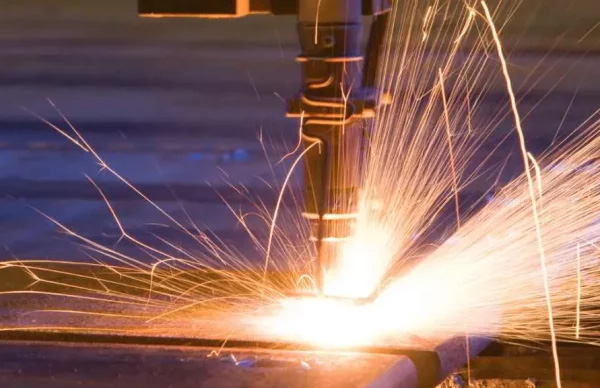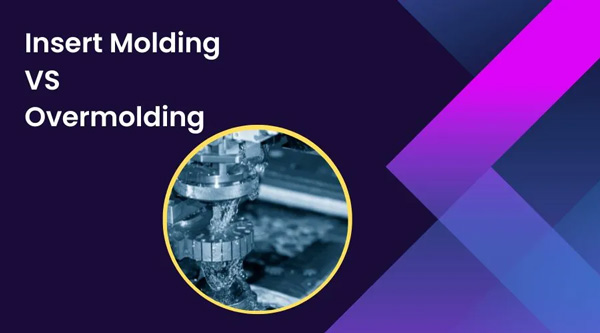Your selection of a manufacturing process can completely change the end results of your project. If you are stuck between urethane casting vs injection molding, worry not. It’s a common issue for many designers and engineers, as they struggle with finding the most economical and time-efficient option available for their components.
But there are no worries for you as in this blog, we will outline the differences in a straightforward manner to help avoid wastage of time, finances, or materials. Whether you are at a prototyping stage or planning for large-scale production, we are here for you. Just keep reading!
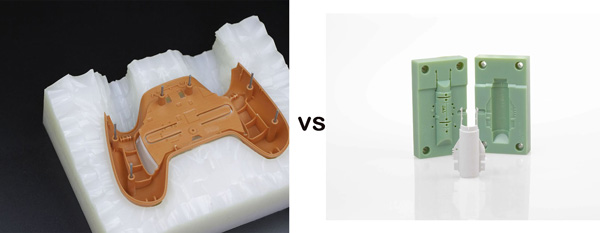
1) What is Urethane Casting & Injection Molding?
An important question that should come to mind when planning a product is its method of production. An example method includes urethane casting along with injection molding. Both methods help in the fabrication of plastic parts, but each has distinct operational methods. So, let’s discuss both one by one.
Urethane Casting
Urethane casting is also known as vacuum casting. It is an inexpensive method of creating plastic parts.
The process starts with a master part, a mold made of Silicon. After that, liquid urethane is poured into the mold under a vacuum. What happens is that the vacuum removes all of the air bubbles and helps flow liquid into every corner of the mold. The product can be removed once it has cured. Well, a single mold can often be used to cast between 20 and 25 pieces.
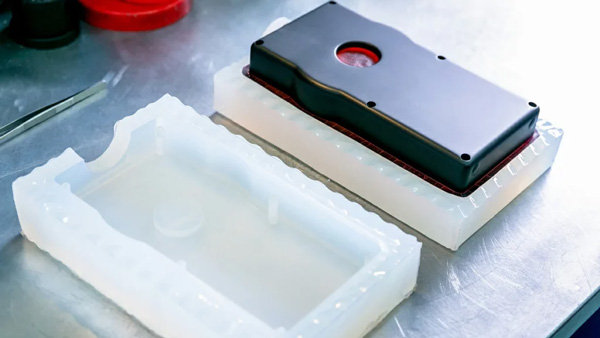
And, urethane casting is widely used to run the production of prototypes, test components, or small-scale production. Well, there are no restrictions on colour or materials that can be used. Moreover, the flexibility, strength, and clarity of the part depend upon the material used.
Injection Molding
For the mass production of plastic parts, injection molding is widely used. In this, to form the shape of the part, steel or aluminium molds serve as the master and cavity.
Well, the process involves heating plastic pellets until they melt; subsequently, pressurising them forces the melted plastic into the hollowed cavity where it takes the desired shape and cools down after some time.
Rayson Haijia shared in a Quora post that the most important factors that can affect the part quality is the melt temperature, mold temperature, injection pressure, and the packing pressure. So, we think you should be focused on these things while molding a part.

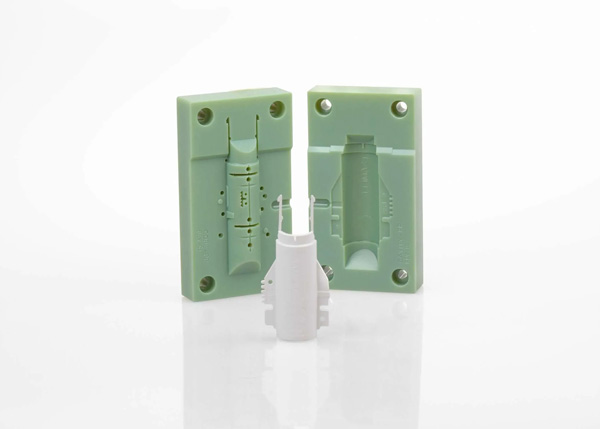
This technique is ideal for use in industries looking to automate, as it has low part cost and uniform quality. Yes, after the mold is created, there is the possibility of producing parts in the thousands or even millions. But, the downside here is that an initial investment is required for both time and money.
We recommend injection molding only for projects where high precision is required and a large number of items are needed in a short time span.
2) Key Differences Between Urethane Casting and Injection Molding
As with any other selection between technologies, if you are going to decide between urethane casting and injection molding, it is necessary to understand the difference between injection molding and vacuum casting. Let’s have a look;
| Factor | Urethane Casting | Injection Molding |
| Tooling Cost | Low (silicone molds are affordable) | High (metal molds are expensive) |
| Lead Time | Short (2–7 days) | Long (3–6 weeks or more) |
| Production Volume | Low to medium (10–100 parts) | High (1,000 to millions) |
| Material Options | Wide variety of urethane resins | Wide variety of thermoplastics |
| Part Complexity | High detail, good for complex parts | High precision, excellent repeatability |
| Unit Cost | Higher for large runs | Lower for high volumes |
Let’s now look at Injection molding vs vacuum casting in more detail
- Tooling and Setup
With urethane casting, the use of silicone molds means that these casts are quick to fabricate.You can even start the process without spending much money. While injection molding requires metal molds, which are much more expensive to produce due to their durability.
- Lead Time
In a rush? Urethane casting will get you parts within a few days. Injection molding has more complex steps in mold making, so it may take several weeks before production begins.
- Production Volume
To be frank, consider how many parts you need. Short runs, like a few dozen or hundreds of parts, work best with urethane casting for testing or limited releases. But for thousands, injection molding is your best, honestly. Yes, because its infrastructure is designed for large-scale production.
- Material Options
Both methods offer many material choices. Urethane casting works with polyurethane resins that mimic rubber and plastic to glass-like materials. Casting works with thermoplastic materials such as ABS, Nylon, and Polypropylene.
- Part Detail and Precision
Both approaches work with intricate geometries, but injection molding provides more precision in repetition from part to part. Although urethane casting captures details exceptionally well, it may show small differences between batches as time passes.
- Cost Per Part
Overall, urethane casting is more affordable for small quantities of parts. However, as production increases, injection molding becomes more economical due to the reduced overhead per unit. Ultimately, this process yields the lowest cost per unit in high-volume manufacturing settings.
Now, you will be clear about major things and vacuum casting vs injection molding pros and cons. Alright! Let’s move ahead!
3) When to Choose Urethane Casting?
This method works best for projects that require speed and flexibility, and there is a demand for low production. Okay, here’s when it is most useful:
- a) For Prototypes and Testing
Urethane casting offers realistic components that greatly help in checking designs, workflows, function tests, gathering reviews, and adjusting based on feedback before mass manufacturing. Moreover, it assists in product sample displays for potential investors or clients.
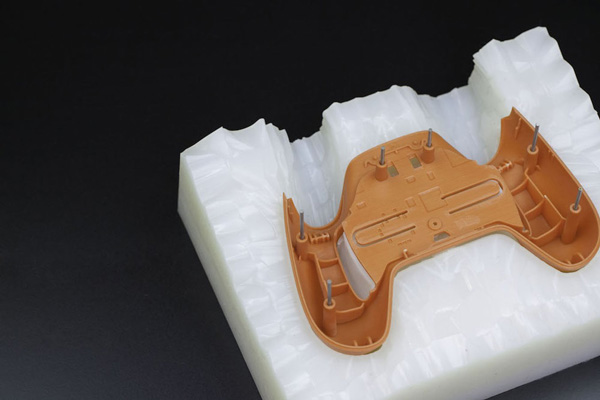
- b) For Low To Medium Volumes
Well, it is ideal within the range of 10-100 units due to the ease of quick turnaround for low production or marketing samples before launching. Also suitable for custom-made items not intended for mass production, requiring short-run productions highly adaptable.
- c) When Tooling Cost Matters
The cost of silicone molds is less than urethane overmold foam injection molding tools. Unlike urethane overspill, there is no need to spend heavily on metal toolings, which is a boon for startups or product testing phases.
- d) For Quick Response Time
Urethane casting has faster turnaround times than traditional castings, as it takes only approximately two days to complete. Having achieved this level in design validation, you can work towards advancement in other parts of the work.
- e) When You Need Material Variety
Availability of soft rubbers and plastics and various colours expands options. So, you can closely match the final molded components injected at later stages.
- f) To Create Complex Shapes
Perfect precision casts sharp edges or smooth curves elegantly without drag. If additional polishing is done, it becomes best for use in complicated designs.
- g) When You Expect Design Changes
We do not recommend treating changes post-outlining project goals, especially if it involves heavy fragmentation/ reassembly sequences. But if you want to redesign your part, you can easily do it without taking tension of mold wastage.
4) When to Choose Injection Molding?
Here’s why you should choose it: it delivers long-lasting durability in tools, uniform quality, and high-volume productivity.
- For High-Volume Production: This is perfect when you want thousands or even millions of identical parts produced. The per-unit cost reduces as the number of parts increases significantly.
- When You Need Tight Tolerances: It has exceptional repeatability and accuracy with scale. It makes it useful for meeting demanding requirements. And, it is great for parts that seamlessly integrate or have strict guides to be adhered to.
- For Long-Term Projects: Beneficial for ongoing production demands because metal molds can last for years without the need for replacement.
- When Unit Cost Matters Over Time: Significant volume discounts offset the previously mentioned high initial cost. It becomes increasingly cost-efficient as more parts are manufactured, because the large volume production compensates for all the investments.
- For Strong and Durable Parts: Engineering-grade thermoplastics used in injection molding result in tough final components. So, the final products are so strong that they can bear the harsh conditions.
- When Speed Matters in Mass Production: Production is very fast after the mold is completed, thanks to servicing mass volumes within short cycles of mere seconds throughputs.
- For High Surface Quality and Uniformity: Achieving a polished appearance requires little to no post-processing. Therefore, it yields smooth, consistent finishes using these methods.
5) Cost Comparison: Injection molding vs vacuum casting
In most cases, cost considerations are vital to the selection of a production method between urethane casting and injection molding. Okay, below is a comparison of these two methods under different aspects.
- i) Tooling Cost
Urethane Casting: Silicone molds can be made in a short time and at a low cost. So, they are best suited if you need to test multiple designs or are operating on a tight budget.
Injection Molding: Although metal molds bear significant creation and labour costs, they are durable and are good for mass manufacturing, bearing millions of working cycles.
- ii) Production Unit Cost
Urethane Casting: More expensive per unit, especially if exceeding 100-200 pieces manufactured. It’s effective for short runs; however, large volumes become unprofitable.
Injection Molding: Significant reduction in unit price at scale increases. High volume orders lower the overall expense as well as the unit cost.
iii) Overall Required Investment
Urethane Casting: Lower investment needed. So, best suited for serving prototyping functions.
Injection Molding: A more favourable approach with predictable sales volume, which allows recouping the initial costs due to high demand over long periods. Thus, justifying the significant start-up capital requirements.
- iv) Redesign Investment Expenditure
Urethane Casting: Silicone molds could be changed easily, quickly, and cheaply. So, it is best if you want some revisions.
Injection Molding: Costly to change. Yes, modifying a metal mold can cost tens of thousands and take weeks of work.
- v) Material Prices
Urethane Casting: Prototypes created from urethane foams have a higher material cost because the raw materials are not readily available and offered in smaller quantities as compared to injection molding materials.
Injection Molding: Uses thermoplastics, which have a lower cost value when bought in bulk and have better value options for bulk production.
To be honest, if you’re looking to manufacture less than 100 parts, urethane casting is beneficial pricewise. However, for large-scale production, injection molding retains its cost-effectiveness over time.
6) Real-World Applications of Urethane Casting and Injection Molding
Both methods find their application in many fields, including engineering, art industries, etc. However, one can outperform the other depending on the volume and the intention of use. Here’s their application:
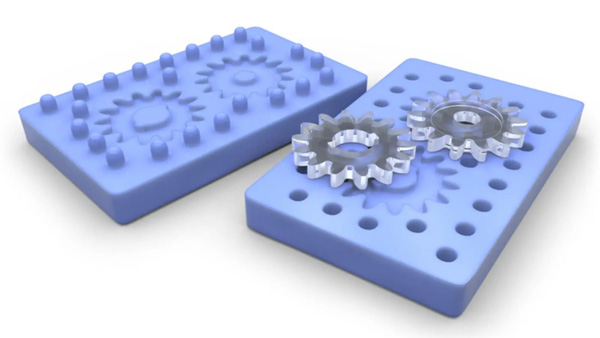
Use cases for urethane casting
- Product Prototypes: High-quality prototypes are easy to manufacture with urethane foam, making it possible to evaluate appearance before full-scale production.
- Marketing Samples: Many companies utilise these form casters, claiming that yields allow demonstrating products earliest during trade shows or client pitches before commercial introduction.
- Custom or Low Volume Products: Especially relevant for design startups, for example, custom electronics as well as limited edition consumer goods. Yes, they can build 10 – 100 units very fast at reasonable costs.
- Medical Devices (Early-Stage): In the initial phases or clinical trials of a medical device, they are used for manufacturing enclosures, handles, and test units.
- Automotive Concept Parts: These are employed in automotive design studios during the modelling phase to produce early visual mockups, as well as interior items.
Use cases for Injection Molding
- Consumer Electronics: For the mass production of plastic parts such as phone covers, remotes, and chargers.
- Automotive Parts: For mass production of bumpers, clips, dashboards, as well as other interior panels. All these parts are produced in large quantities with accuracy and reliability.
- Toys and Household Goods: Due to speed and cost effectiveness from injection molding, even plastic kitchen utensils and LEGO blocks fall within this category.
- Medical Equipment: Consistent mass production of syringe housings, assembly clips, and containers is achieved while maintaining stringent sterile quality standards.
- Packaging and Containers: Syringes, caps, lids, as well as food packaging pouches, require sterile conditions while being produced in millions, which makes them ideal candidates for precision molded parts.
7) Get High-Quality Prototypes & Production Parts with Koonze Model
With Koonze Model’s expertise in both urethane casting and injection molding processes, your project requirements will always be fully met, irrespective of your production method choice.
Yes, by shaking hands with the Koonze Model, you gain unparalleled access to expert guidance and assistance, quick completion times, and exceptional components. Our professionals can assist you throughout the process, be it a few prototypes via vacuum casting services or full volume production with injection moulding services.
- Koonze offers:
- Prototyping by urethane casting for limited runs of detailed and flexible parts, as well as quick detailing.
- High precision injection molding for repeatable quality mass production parts made with tight tolerances.
- In-house design support to finalise your part and develop it for manufacturing processes.
- Proper identification and selection of resin or thermoplastic materials for your application.
Driven by years of experience in the field alongside providing quality service, Koonze equips you with strategically tailored solutions that ensure alignment to your goals — speed, volume, or cost. Additionally, enjoy reliable communications, fair rates, and visibility from quote through delivery.
For accurate quotes according to your project requirement, visit https://www.koonze-rapid.com/get-a-quote/.



